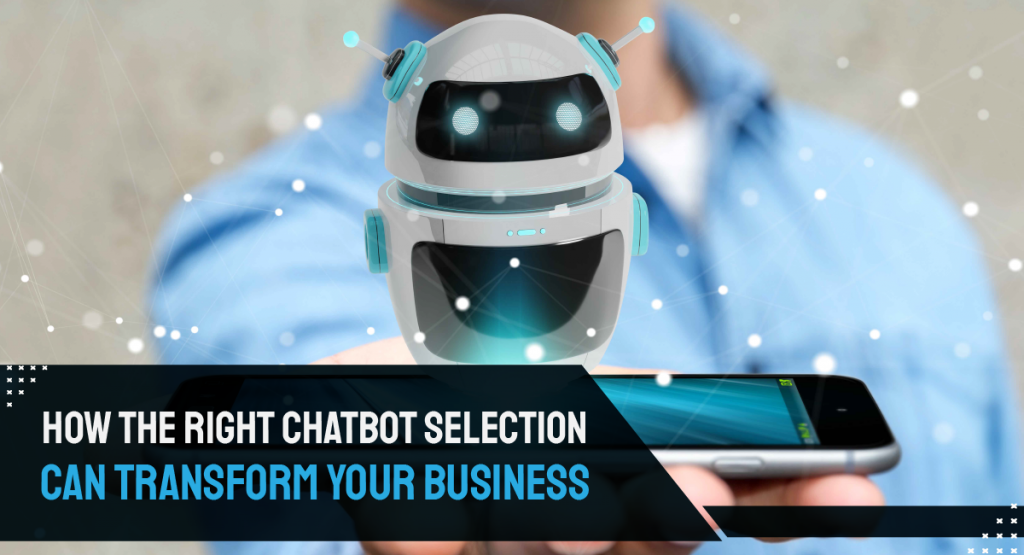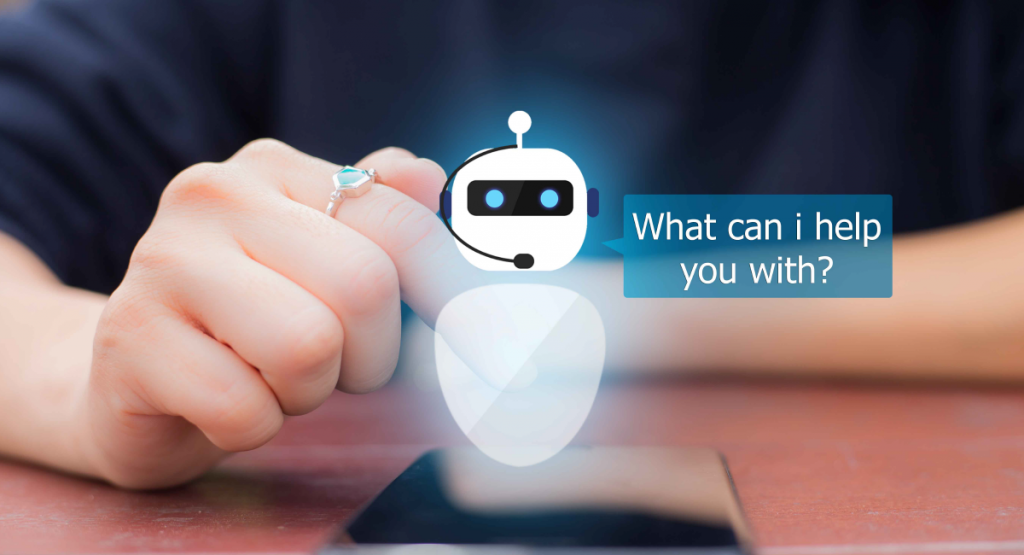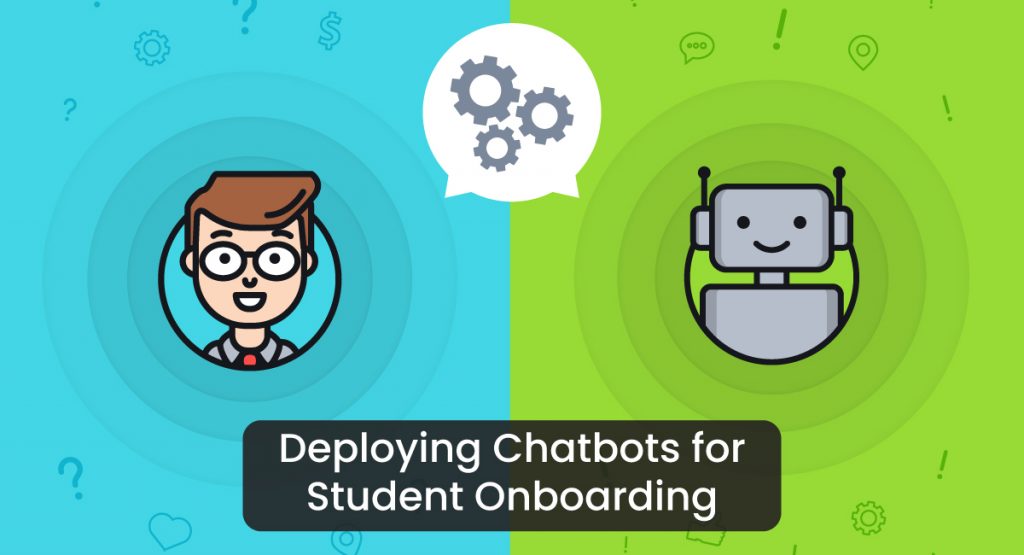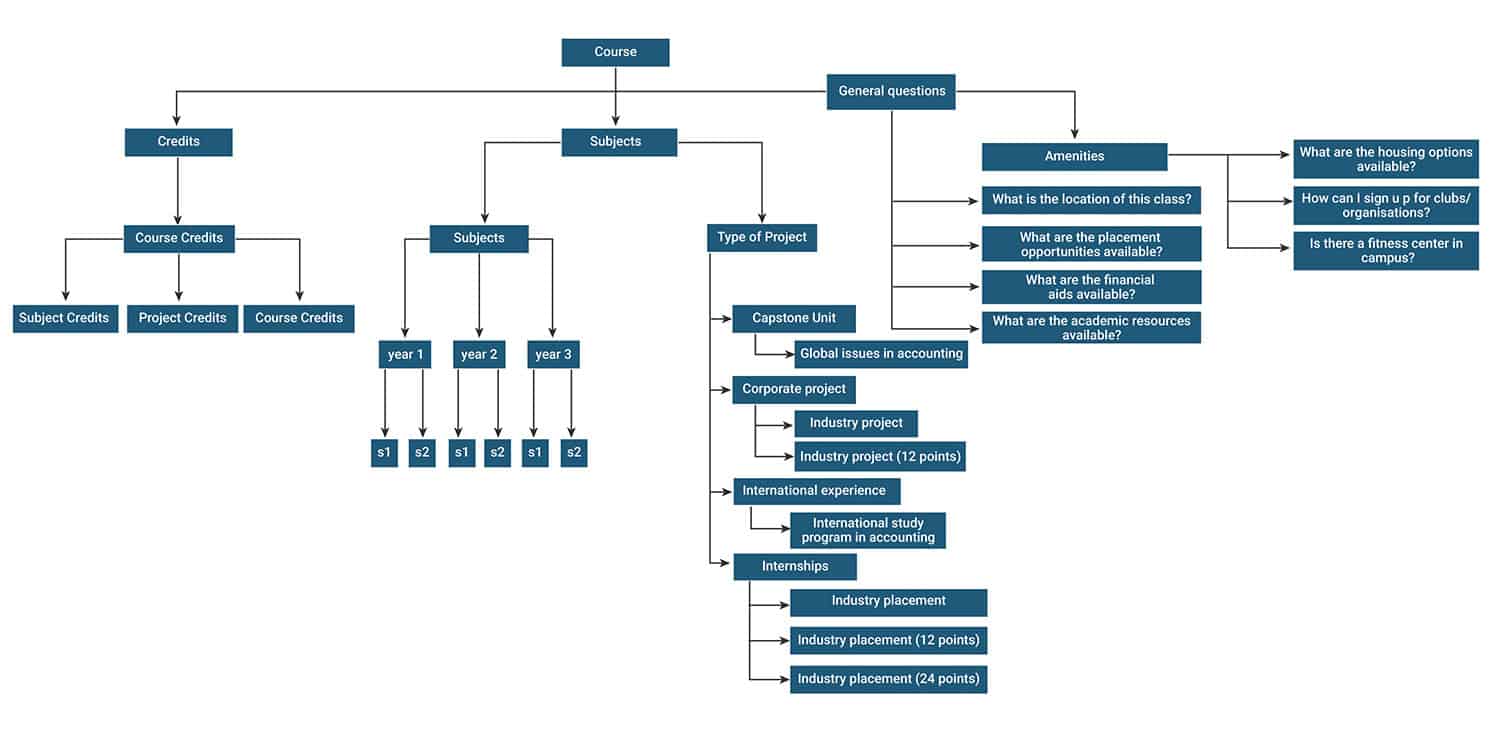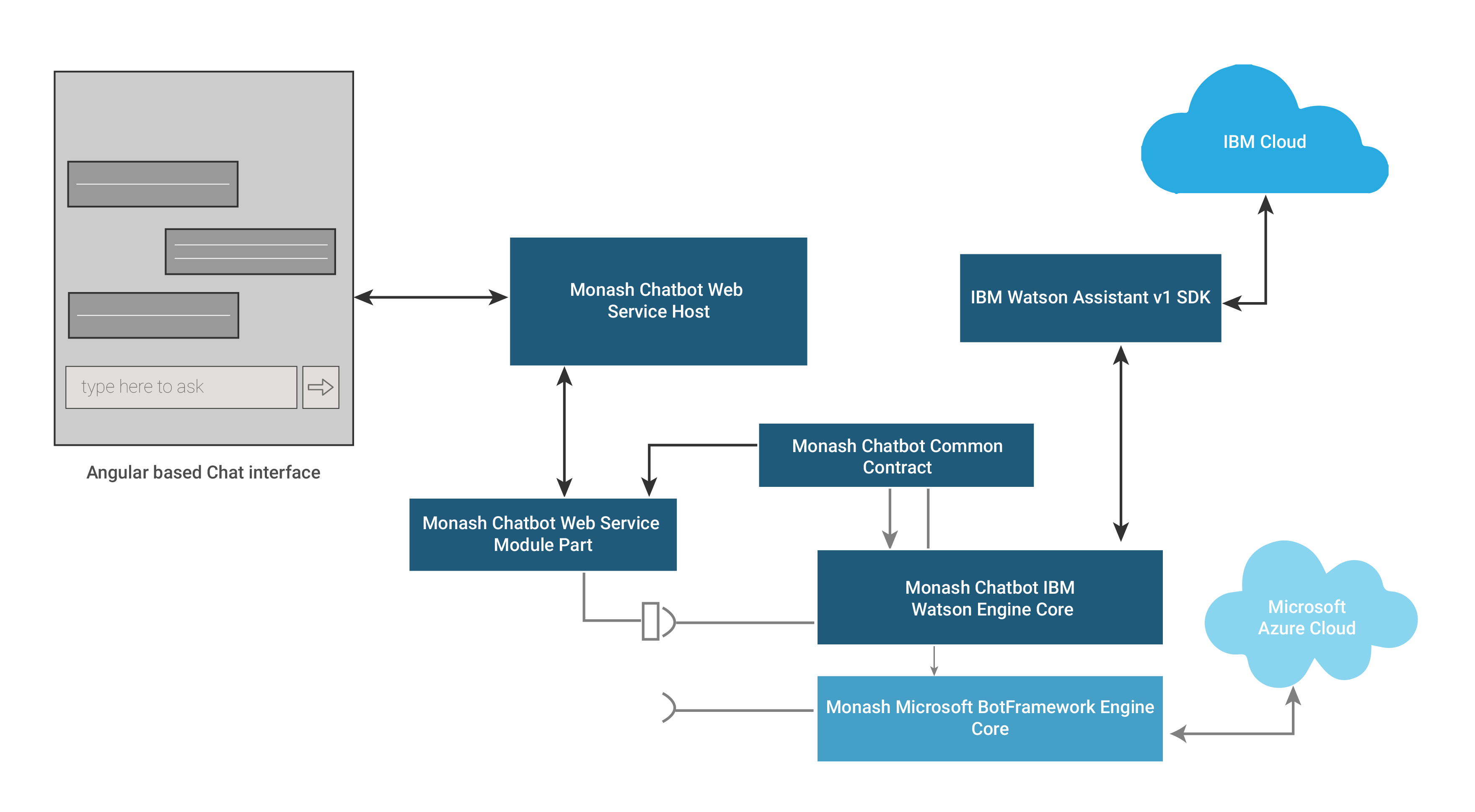Tag: chatbots
“The human language, as precise as it is with its thousands of words, can still be so wonderfully vague.” – Garth Stein, American author.
Human language is unique and complex. Encoding human language is considered a difficult task. For starters, you can arrange words in infinite ways to form a sentence. Also, each word can have several meanings. Training machines to communicate as humans do is a gigantic task. In recent years, Natural Language Processing (NLP) enabled computers to understand human language and respond sensibly. It is the intersection of computer science, linguistics, and machine learning.
NLP is the driving force behind technologies, like virtual assistants, speech recognition, machine translation, and much more. This blog discusses the importance and top benefits of NLP. It will also explain how businesses can foster the power of NLP.
Importance of NLP
Machine translation is the most widely used NLP application. NLP methods enable the machines to understand the significance of sentences, thus improving the effectiveness of machine translation.
NLP is important for businesses as it can detect and process massive volumes of data across the digital world, including social media platforms, online reviews, and others. Also, NLP technology is able to offer businesses valuable insights into brand performance. It can also detect any persisting issues and take necessary risk mitigation measures to improve performance.
NLP can achieve all of this by training machines to understand human language faster, more accurately, and in a reliable way. Because NLP can monitor and process data consistently, brands can remain updated with their online presence.
NLP is a valuable asset for sentiment analysis as it helps businesses recognize the sentiment of their customers from different online posts and comments.
Top Benefits of NLP and How Businesses Can Foster the Power Of NLP
1. 24/7 Go-To Customer Support
AI-based chatbots use NLP to help customers get immediate answers to any query 24/7. What if the queries focus on the same themes? Chatbots can play the role of a customer service executive by using predefined answers. They can even provide specific support like booking a service or finding a product. Thanks to NLP techniques that analyze specific words, chatbots can now detect a user’s intention.
We live in an era where a person looks for an immediate answer to his question. If not, he switches to a competitor. Chatbots are the perfect solution! They can even convert prospects into a customer by providing ultra-attentive service.
Read more: 5 Leading NLP Platforms that Support Chatbot Development
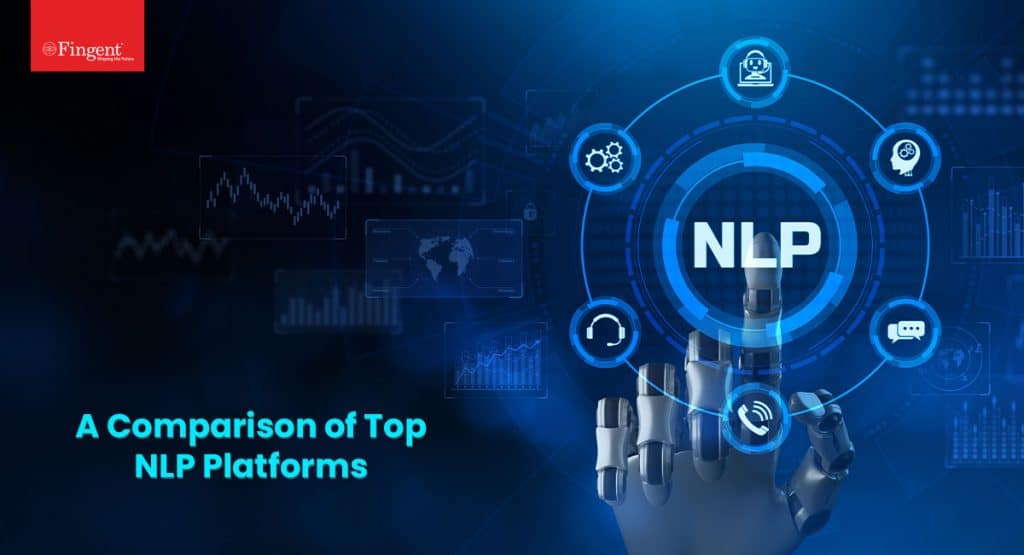
2. Save Resources
A business is successful when it begins making a profit. It was predicted that NLP-powered chatbots will save businesses over $8 billion per year. It can free up employee time, allowing them to focus on the creative tasks that engage customers and boost your bottom line. What’s more, NLP-based software can be improved automatically, often without investment.
3. Moderate Content on Websites
Businesses can use NLP technology to enforce spam filters and block unwanted content on websites and in email. It enables you to maintain your forum’s quality while avoiding unsolicited advertising, controversies, or backlinks to malicious sites.
Furthermore, the NLP model can even detect hate speech. How is that possible? Advanced NLP models can learn to read the context of a sentence and classify it into the appropriate group. By using the appropriate token, the NLP model can read a user’s emotions. This unique technology allows you to tailor the solution to a specific audience or place, as the language may differ from place to place.
4. Boosts Conversion Rate
Converting site visitors to customers is the key for businesses and NLP solutions are experts in conversion optimization. Along with the chatbots, features like auto-complete text and more advanced search functionality aid in conversion optimization.
5. Enhances End-User Experience
As you may have already noticed from the above points, NLP technology improves the end-user experience. The growth of your business depends on your users having positive experiences throughout their customer journey. And all these factors have an impact on whether they will talk to others about your products or services.
6. Empower Your Employees
NLP solutions are AI-based. So, NLP software can handle the most time-consuming, routine tasks like answering repetitive questions, scanning documents for keywords and filtering them, spell checks, and many more. When these tasks are automated, you will see employee satisfaction shoot up, job engagement improve.
7. Search Engine Optimization
Every business wants to rank high. NLP solutions can analyze search queries to identify and suggest related keywords. Doing so saves time spent on research, and you will be able to better target customers and create more focused campaigns. As a result, your company will become more visible.
How NLP Is Transforming The Future
NLP regulations are advancing speedily like never before. Experiments are conducted to help the bots remember details associated with an individual discussion. We are likely to reach the developing level shortly. Though NLP technology is far from perfect, it is definitely getting harder to tell whether we are talking to a human or a machine.
We are living in an era where machines can communicate with humans. Hence, NLP utilization possibilities are endless. Businesses are expected to reap are staggering future benefits. NLP market size is anticipated to reach 35.1 billion by 2026 at a CAGR of 20.3% during the forecast period. As seen above, NLP improves the quality of life by a significant margin. As the world revolves around automation, we can expect NLP to affect more and more aspects of our lives.
Read more: Using Technology to Build Customer Trust: Your Business Plan for 2022!
How Can Fingent Help Deploy NLP?
As businesses increasingly talk to their customers in their own language, the demand for NLP modules is steeply rising. In a world filled with time-pressed shoppers, businesses are expected to get things right the first time. NLP can get you there.
Fingent top custom software development company helps businesses master e-commerce personalization with content, discovery, and engagement. We can help businesses with their use of chatbots or automation for sales, customer support, brand engagement, and human resources. Fingent can also provide a host of apps and analytics dashboards for the holistic management of multilingual customer interactions. As you can see, the possibilities are endless.
Let’s talk and identify which powerful features of NLP your business will benefit most from!
Stay up to date on what's new

Featured Blogs
Stay up to date on
what's new



Talk To Our Experts
Building a successful business is a marathon. But determination and a business growth mindset can make it happen. If you are a business owner looking for a consistent approach to growing your business, you must realize that the essence of your company is the ability to establish trust with your customers.
True, building customer trust and loyalty takes time, effort, and persistence. But when you build trust, you are turning the key to rich dividends as your customer evangelists gear up to advocate your business. In turn, it increases brand visibility, attracts more consumers, and increases revenue.
In this article, you will learn the importance of building customer trust and loyalty in the growth of your business. You will also learn how emerging technologies can help boost customer trust in 2024.
Why Building Customer Trust And Loyalty Will Matter The Most Going Ahead?
As the world battles to contain the current pandemic crisis, customer trust and loyalty are being put to the test. However, it is good to remember that this is just one of the many crises we will face in the future. Now is the time to let your customers know how important they are to you.
Customer trust and loyalty are not just important where competition is fierce. It is a brand differentiator that could make or break a business. In a way, customer trust is an “insurance policy” against any future upheavals. It can ensure your survival if you face problems in the future. It will also ensure that your business thrives when others struggle to find a foothold.
Customer trust and loyalty are also important because they are constantly bombarded with various options. And for obvious reasons, this will only increase in the future. The need to build customer trust and loyalty has heightened, thanks to the immediate effect of emerging technologies.
How Can Emerging Technologies Help Boost Customer Trust?
Technologies are continually evolving and will always impact customer trust and loyalty. The speed of this change is faster than ever now. With emerging technologies, companies must prepare by identifying those trends now and capitalizing on them before it is too late.
The influence of technology can be a powerful catalyst to build customer trust and loyalty. Businesses that do not choose to move with emerging technologies will be left behind and may have to face business disruption.
Today, customers are becoming more tech-smart. To boost customer loyalty and trust, businesses must stay up-to-date with emerging technologies. Here is how you can boost customer trust:
- Technologies can help you keep your lines of communication open, fostering relationships
- Converse where and when you need
- Create a high level of personalization to promote brand loyalty
- Create an experience both online and in real-time
Read more: Customer Retail Software Solution: Everything you need to know!
Technologies That Help Drive Customer Loyalty Through Unique Experiences
There are many opportunities to engage your customers and build their trust and loyalty. But that is only possible if your business is equipped with the right tools to capitalize on it. Consider some:
1. Chatbots
The influence of technology offers companies solutions to meet higher expectations. AI-powered chatbots enable businesses to better communicate with their customers. It helps you to be there with relevant messaging and information whenever the customers choose to reach out.
This has a significant impact on customer trust. It is noted that customers are increasingly willing to buy a product through chatbots.
Additionally, chatbots provide detailed records of conversations with your customers. This provides you with data that can be analyzed to gain insights on customer pain points. This data can also be used to improve your products and services.
2. Voice capabilities
Voice capabilities can be relied on to engage customer loyalty and facilitate actions. These capabilities can serve as a useful tool to the customer as it leverages data to make customers’ task simpler and more seamless.
Voice-enabled technology enables your company to do all these more efficiently. Besides, it appeals to busy customers as it indulges them in a quick shopping experience. This builds customer trust and loyalty and encourages repeat business.
3. Virtual and Augmented Reality
Virtual and Augmented Reality (AR and VR) technologies are game-changers in the way businesses communicate and interact with their customers. They enable customers to educate themselves and solve their issues better than ever before.
Additionally, these technologies will provide your sales reps better understanding of what the customer is going through. Thus, it increases their empathy and enables them to come up with better solutions for your customers’ issues.
Virtual and Augmented Reality are enabling the visual journey of the customer allowing them to search by looking at an object. This can open to new experiences. The resulting data can be used for innovative engagement in the future.
Read more: 7 Ways Augmented Reality will Transform Experiential Marketing!
4. Customer Relationship Management (CRM)
CRM (Customer Relationship Management) is a tool for tracking and managing a customers’ journey. It makes communication between marketing teams more efficient.
A CRM tool allows retailers to analyze huge amounts of customer information including the feelings that drive customer behavior. This enables your company to establish a deeper connection with your customers. Using this technology will help you craft more highly personalized messaging and new features to your services and products.
5. Virtual showrooms
Many shoppers still prefer the in-store experience. Virtual reality allows customers to see a 3D rendering of a kitchen or other renovations. It also allows customers to pick and choose the items they would like in their virtual room.
This technology can also be useful in purchasing clothing from the comfort of their homes as it allows them to mix and match.
6. Artificial Intelligence
Artificial Intelligence (AI) can help your business stay a cut above the rest. It is a great tool to build customer loyalty and trust.
AI can provide you with needed information to understand the purchase behavior and interaction patterns of your customers. This information can be leveraged to design products that suit your customers.
Natural Language Processing (NLP), computer vision, and deep learning can be used to analyze a vast database of visuals and text. You can use this information to identify the main themes in colors, patterns, styles, and so on of your products. These findings can be implemented while designing future products.
Gear Up for Exciting Opportunities
Emerging technologies uncover exciting opportunities for businesses and are poised to increase economic growth by building customer loyalty and trust. Are you in on it? Give us a call and let’s get talking.
Stay up to date on what's new

Featured Blogs
Stay up to date on
what's new



Talk To Our Experts
The Role of Chatbots in Boosting Brand Loyalty and Experience
As social messaging apps are gaining popularity, AI-powered chatbots are one of the best ways to reach out to a broader audience. Soon, several businesses across various verticals will implement AI chatbots that will help them carry out multiple tasks, including customer service and marketing activities.
According to Gartner, by 2021, over 50% of companies will spend more on developing chatbots (intelligent conversational assistants) against traditional mobile app development.
A chatbot is an AI-based program that communicates with humans through text messages or chats. It is a virtual assistant integrated into mobile applications, websites, or instant messengers and enables better engagement with your customers.
Read more: 5 Leading NLP Platforms that Support Chatbot Development
Two common types of chatbot
There are two types of chatbots a business can use: Transactional Chatbot and Conversational chatbot.
- Transactional Chatbot is pre-designed to provide a customer with a fixed set of choices. The customer can select an appropriate option, and the chatbot will then assist them through the whole process by providing more choices till their problem is solved. A transactional chatbot is an excellent choice for banks, online food delivery, restaurants, or businesses that are able to understand and pre-define the solutions/ products that their customers generally seek.
- Conversational Chatbot is designed to understand and respond to a conversation in a more human-like manner. It is equipped with artificial intelligence and has access to knowledge databases and other contextual information.
A conversational chatbot is more suited for businesses with advanced SaaS tools and B2B companies providing enterprise solutions and online social platforms.
Read more: How to Choose the Right Chatbot for Your Business
Five leading chatbot use cases in vogue today
1. Healthcare chatbots
Hospitals, clinics, and patient treatment centers leverage chatbots for booking appointments, sending medical information to refill prescriptions, answering common questions raised by patients or their attenders, checking physicians’ availability, and so on. According to Crunchbase, VCs have invested over 800 million dollars in at least 14 known start-ups like Safedrugbot, Sensely, Cancer Chatbot, and others to own a version of a chatbot with health features. The most significant advantage is that chatbots function silently 24/7 without disrupting anyone and answering questions at any time of the day.
Browsing through the website of a multispecialty hospital and sifting through the different specialties and doctors can be daunting. Chatbots reduce this strain and help patients book an appointment quickly based on their ailment or health condition. When a patient interacts with the chatbot, it will ask a series of questions to determine which doctor and department the patient should visit.
Example of a healthcare chatbot
Healthily is an AI-driven chatbot that allows you to input your symptoms and get an appropriate diagnosis. Its machine learning model allows the app to give near accurate or even accurate diagnoses.
Chatbots like Healthily prevent patients from waiting in long queues or relying on phone calls to consult doctors. With the ongoing pandemic, chatbots are making patients feel less anxious about seeking medical care. Chatbots help them get assistance in real-time.
2. HR chatbots
As the traditional office spaces give way to modern workspaces that are mobile, digital, or home, HR (PeopleOps) professionals face the increasing pressure to streamline communications and send instant responses to employees. Chatbots powered by AI free people from low value, tedious, repetitive, and transactional tasks to more high-value, strategic, engaging, and creative work. The inherent value extends to providing consistency and coherence to employee communication and reducing confusion for the end-user while delivering an instant response. HRs get more time to rethink the way they engage with employees and manage their entire cycle of work, including recruitment, onboarding, managing payroll and benefits, training and skills development, performance management, and so on.
Example of an HR chatbot
AskHR is an AI-powered HR chatbot that enables employees to get answers to the most frequently asked questions. AskHR bot natively supports 50+ languages and is hence a globally popular virtual assistant. It offers voice, email, and text support to employees and helps reduce costs, enhances employee engagement, and offers analytics to derive valuable insights.
Read more: Capitalizing on AI Chatbots Will Redefine Your Business: Here’s How
MUSA, Fingent’s AI virtual assistant
Multi Utility Assistant or MUSA is an AI-powered virtual assistant (a chatbot) integrated with Fingent Hub – Fingent’s internal employee management system. MUSA enables employees to get answers to common queries related to HR and IT DevOps processes at Fingent.
The virtual assistant helps our employees with questions related to their leaves, company policy, hardware or software issues, IT requests, and many more.
3. E-commerce chatbots
E-commerce chatbots guide customers in their purchase decisions.
Often, customers can get confused while browsing several products online. An E-commerce chatbot helps customers obtain detailed information about the product they are looking for or even helps them land on the right product page. Chatbots also help reduce cart abandonment as they can remind customers about the items left in their cart and prompt them to update their cart or purchase the items. Timely reminders and notifications will nudge the customers to revisit their carts and make a purchase decision, thereby helping businesses generate revenue quickly.
Example of an E-commerce chatbot
While launching its AirMax Day shoes, Nike increased its average CTR by 12.5 times and the conversions four times with the help of StyleBot- Nike’s chatbot.
Chatbots play an essential role in providing more reliable and quicker customer support and keeping the customers up-to-date about the delivery status of their purchases.
Read more: 5 Ways Chatbots Can Transform Your Real Estate Business
4. Chatbots in banking and finance
Chatbots are a great addition to any bank or finance institute that prioritizes customer service inclined towards digital interactions.
Chatbots can help users check their account balance, transfer money to other accounts, view the history of transactions, or even locate the closest ATM. In addition, banks are currently using chatbots for marketing activities such as sending customized information about a customer’s savings, investments, etc., and notifying customers about their new products and services.
Example of a BFSI chatbot
In 2018, Bank of America introduced Erica, their AI Chatbot. It helps customers conduct simple actions such as paying bills, receiving credit report updates, view e-statements, and seek financial advice. Recently, Erica’s capabilities have been updated to enable clients to make smarter financial decisions by providing them with personalized insights. Thanks to its budgeting capabilities, Erica users grew to 12.2 million in Q1 2020 compared to 10.3 million in Q4 2019.
5. Hospitality chatbots
The hospitality industry is hugely dependent on customer service, goodwill, reviews, and references. As travelers use multiple channels (website, social media, mobile travel apps, travel aggregator portals, etc.) to look for information, travel and hospitality service providers face stiff competition in disseminating updated content across all media. They need to be available round-the-clock in answering customers or helping with bookings. Chatbots help customers make bookings, gain more information about hotel services, travel packages, and inquire about offers and deals. From check-in to several concierge services such as booking restaurants to activity reservations, chatbots can seamlessly assist customers.
Example of a hospitality chatbot
Quicktext is a popular AI-powered chatbot for hotels that automatically handles 85% of guests in 24 languages and delivers instant response to customer requests across six different channels. In addition, it serves as a messaging hub where hospitality businesses can centrally manage Live Chat, WhatsApp, Facebook Messenger, WeChat, SMS, and Booking.com communications.
Read more: Hospitality Technology Trends: Revive The Lost Glory in 2021
How can chatbots help your business?
With the rise of emerging technologies such as artificial intelligence and wearable technology, chatbots provide industries with new avenues for businesses to engage with their customers.
1. Leverage messaging platforms
While social media engages audiences, messaging platforms enable businesses to have a one-on-one conversation with their customers. So, by integrating chatbots with your messaging platform, you could eliminate the need to build a new app and save time and money.
2. Customer service
Chatbots are a great way to augment customer service. The bots are available 24x7x365, which allows them to initiate the conversation proactively and prevent customers from waiting for long.
3. Customer engagement
Intelligent chatbots allow you to have more in-depth conversations at an individual level with your audiences, freeing them of any irrelevant information. So, a well-designed chatbot can extend the conversation and make the visitor come back for a discussion or a purchase. This can go a long way in establishing your brand loyalty.
4. Cost optimization
Getting a chatbot for your business is far cheaper and faster than developing a cross-function app or hiring additional employees. Chatbots do not need breaks, get tired, or make errors. Also, they can perform repetitive tasks without complaining.
Develop a custom chatbot for your business application
Chatbots are being widely used across different business functions and are augmenting customer experience. With advances in technology, bots will only get more competent and open new avenues to streamline customer communications.
We software development experts build bespoke and personalized chatbots leveraging AI and machine learning that enable your business to generate leads, increase revenue, and enhance user experience. If you are planning to develop a customized chatbot that can compete with the predefined bots in the market, contact us.
Stay up to date on what's new

Featured Blogs
Stay up to date on
what's new



Talk To Our Experts
A Comparison of Top 5 NLP Platforms: Select Your Chatbot Development Platform Wisely
The surge of artificial intelligence-based applications and conversational AI have heightened the use of NLP (Natural Language Processing). Each day, businesses collect an enormous amount of structured and unstructured data from their customers and users. Such information is collected through chatbots, intelligent assistants, and so on. Analyzing these data offers businesses insights into crucial operations and enhances their decision-making. However, manually inferring insights from tons of data is a challenging endeavor. This is where NLP platforms plays a vital role. This article will help you evaluate five different NLP platforms you can consider while developing a chatbot for your business support functions.
How Does NLP Platforms Help Businesses
Gartner and IDC report that more than 80% of the enterprise data generated today is unstructured. Natural Language Processing (NLP) technology helps us derive meaning from the vast labyrinth of online data. NLP refers to applying several computational techniques that enable us to do analysis and synthesis of natural language and speech. According to a report by Intrado GlobeNewswire, the NLP market is expected to be work USD 42.04 billion by 2026.
Chatbots are software applications that help us conduct conversations online via text or text-to-speech instead of directly communicating with a human agent.
Chatbots provide a better service experience to customers by responding to customer queries promptly, accurately, and most importantly, like humans. AI-powered chatbots can be trained to learn from data to respond in different and diverse scenarios.
However, picking the right chatbot platform can be a gigantic task. Here’s an analysis of five NLP platforms. Choose your chatbot development platform wisely.
Read more: Capitalizing on AI Chatbots Will Redefine Your Business: Here’s How
1. IBM Watson Assistant
A pioneer in the chatbot market, IBM’s Watson Assistant has evolved into a holistic customer care product. As the pandemic weighed heavily on businesses, customers and employee services were challenged in unimaginable ways. IBM Watson Assistant is designed to solve customer and employee challenges, so its relevance became even more significant during this time. Using IBM Watson Assistant to create your chatbot helps in the following ways:
First contact resolution
Resolving questions quickly and successfully is one of the biggest priorities of Watson Assistant. One of the critical challenges of first contact is user engagement. If that is your concern, here is how Watson contact can help:
- Allows integration with the phone, SMS, and WhatsApp: As it can integrate with phone and SMS, you can deploy speech services with natural sounding voices created with the help of advanced AI.
- Best intent recognition accuracy: Watson Assistant helps you understand your customers’ questions without always requesting them to rephrase the question.
Open ecosystem
Watson Assistant is designed as an open ecosystem. It, therefore, allows you to connect with your existing tools, systems, and applications. Besides, it gives you the ability to orchestrate the end-to-end experience.
Scale your assistant to increase complex use cases
Watson Assistant allows you to scale your virtual assistant beyond simplistic FAQ bots. It can be customized easily to fit the specific needs of your business.
Use cases: Companies such as Botanalytics, Ebix, and SnapEngage use Watson Assistant.
2. Amazon Lex
Amazon Lex allows you to create and embed engaging chatbots into your applications, shielding you from the complexities of NLU (Natural Language Understanding) and speech recognition. Here are some of the top features of Amazon Lex.
Quicker integration
The capabilities of Amazon Lex are simple and easy to use, allowing you to scale up from ground zero to a fully operational chatbot within a matter of minutes. Using a combination of aliases and versioning, you can roll out your conversational interfaces into multiple environments.
Cost-effective solution
Amazon Lex has no upfront costs. You can pay-as-you-go.
Fully managed service
It provides all the necessary features to build, deploy, scale, and monitor your chatbot.
Business use cases
- Commerce chatbot: Allows you to order food
- Support chatbot: Provides automated customer support
- Enterprise chatbot: This allows you to connect to enterprise data resources
- Use cases of Companies: Lumeneo.com, Paralect, and CommonBond use Amazon Lex.
3. Rasa
Rasa platform is an open-source framework. It is leading in ML toolkits that help developers create better chatbots with minimal training data. The two major components of the Rasa stack are Rasa NLU and Rasa Core. Rasa core helps create intelligent, conversational chatbots.
It is best for businesses that are looking to increase subscriber engagement and for those who are interested in marketing automation and personalization.
The benefits of Rasa are:
- You can deploy into your own server by keeping the components in-house
- Highly customizable
- Allows for multiple environments necessary for development, staging, and production
- It helps you send individualized newsletters to each of your subscribers
- It continues to self-learn when it interacts with people
- It allows you to understand your customers better
- It can be integrated with Facebook Messenger, Twilio, Telegram, and more
4. SpaCy
Spacy is an open-source NLP library that is designed for production usage. It helps you build real-world projects and handle large amounts of text data. It is a one-stop operation for most heavy-hitting functions for NLP.
It is best for companies that are bootstrapping a vast production or for vendors in charge of enterprise solutions. It has proven highly useful for companies that require industry-level solutions and need enhanced language support.
Some of the benefits of SpaCy are:
- It easily allows deep data mining
- It does not weigh down the user with obscure formulas
- It can analyze text quicker than its competitors
- Enables businesses to implement strategies to interact with customers and leads
- It is capable of working with over twenty languages
- Allows you to handle NLP solutions across an international suite of languages.
- It is a powerhouse for every deep learning algorithm with the tools you need to teach your programs human language.
5. Microsoft Azure
Microsoft Azure bot service helps you develop, deploy and host a chatbot in an uncomplicated manner. It is a managed bot-building platform with an integrated environment. It is purpose-built for bot development.
Microsoft Azure bot services are best for enterprises and IT companies.
- It helps run FQAs speedily and consistently reducing customer management issues
- Easy to integrate with various Azure services
- You can build, connect, test, deploy and manage intelligent bots from one place
- Easy to integrate with other chatbot software such as Jabber or Skype
Read more: How to Choose the Right Chatbot for Your Business
Why choose Fingent as your chatbot development partner?
Acquire estimates that nearly 1.4 billion people are willing to talk to chatbots. Did you know that chatbots can handle 80% of routine customer questions? These figures prove that the chatbot platform is the present and future of your business.
However, it is important to choose a chatbot development partner carefully. We at Fingent software development experts ensure your chatbot platform is easy-to-use even for non-tech employees. A customized and fine-tuned chatbot frees people up from low value, boring, repetitive, and transactional tasks. It enables your employees to focus on high-value, strategic, engaging, and creative work. The business value also lies in that the chatbot provides consistency and coherence to your communication, reduces/ eliminates confusion for the end-user while giving an instant response. It helps your employees get things done fast as they need not worry about the low value, boring, repetitive, and transactional tasks. Thanks to chatbot development!
We will work with you through all the stages, from requirements identification, technology selection to planning and implementation. We will continue to support you in managing the chatbot after deployment. While you zero down on the chatbot platform, choosing the right partner to help you develop the chatbot according to your specific requirements is essential. Give us a call, and let us get talking.
Stay up to date on what's new

Featured Blogs
Stay up to date on
what's new



Talk To Our Experts
Why IT is the guardian angel of businesses during a recession?
- Introduction
- Advantages of cutting-edge IT solutions
- 9 practical examples of how IT solutions recession-proof your business
- Use the present crisis as an unprecedented opportunity to lead
Introduction
Decreased revenue churn and the uncertainty in the global economy is making it difficult for many businesses to keep their financial wheels turning during the COVID-19 slouch. They are forced to revisit their strategies w.r.t. how they manage and operate their business, and vital to this is re-visiting their use of technology.
IT solutions lead to new ways of innovation and this can help organizations make lasting improvements to recession-proof their business. IT solutions allow leaders to redesign processes from the ground up. IT automates processes, with data captured at the right moment to deliver insights on processes and how to streamline them. IT innovative solutions rewire organizations to perform better through a fundamental reboot of how work gets done.
This article presents
- How businesses are adopting IT solutions to improve productivity and cut costs, while they recession-proof their business.
- 9 practical examples of IT solutions.
Advantages of cutting-edge IT solutions
– Improve productivity
Lack of technology has been one of the reasons why employees are unable to reach their productivity targets. According to a recent Workers’ Experience Survey, 85% of employees said they would prefer their organizations to provide them with the entire IT ecosystem (including tested and supported devices, accessories, and so on) that will help them to be more productive in their work.
– Cut costs
Most businesses are understandably reluctant to loosen the strings of their purse in the current situation of uncertainty. However, done in the right way, IT innovative solutions can be self-sustaining, and each of the incremental improvements will pay for the next leg of the journey. Take cloud computing for example. Cloud computing allows you to get rid of the hardware cost. Instead of purchasing your own equipment, the provider can offer you all that you need to keep your business running. Since it works on a per-per-use pricing model, it saves you from paying for any unused software/ hardware. 47% of IT executives report that their IT costs have dropped by 30-50% after they started using cloud infrastructure and apps.
– Recession-proof business
Technology will help you ensure that your business not only survives the imminent recession but also thrives. Among the many things, IT solutions will help you gauge customer engagement in real-time, keep your data clean to maximize new business growth potential, free up more time for employees to sell, and manage client experience.
Read more: Recession-proof Your Business with Digital Alternatives, Go Paperless!
9 practical examples of how IT solutions recession-proof your business
1. Cybersecurity
Data privacy continues to be a major cause of concern as incidents of phishing and other threats are on the rise. Businesses must rely on new and innovative IT technologies to help them differentiate and ensure growth in the evolving marketplace. Businesses that lack effective security measures face the ever-looming risk of exposing themselves to data theft that would result in breaking the trust of their stakeholders, customers, and the marketplace. Now is the time for a new take on protecting your organization.
Read more: Safeguarding IT Infrastructure From Cyber Attacks – Best Practices
2. Contactless shopping
The COVID-19 led safety norms such as social distancing have pushed businesses to use technology to lower interaction between people, products, and infrastructure. Contactless shopping allows your customers to conduct entire transactions on their mobile devices without touching anything else. For those who prefer stepping out to shop, technology solutions can be integrated and implemented for contactless shopping.
Read more: How Retailers Can Revive Sales While Adhering To Social Distancing Norms
3. Omnichannel for retailers
Innovative technology ensures that retailers have an omnichannel presence across all touchpoints. This means that they can go beyond brick-and-mortar locations to mobile browsing, social media, online marketplaces, and every online channel where the customer is inclined to browse. It helps retailers manage their tasks effortlessly while allowing customer engagement through a common quality service across various sales channels.
Read more: 6 Hot Technologies that Handhold Businesses Amid COVID-19 Impact
4. E-commerce
E-commerce solutions enable centralized management of all the orders as well as the inventory of both the digital and brick-and-mortar stores. This technology can direct the order placed online to the nearest store for faster delivery providing enhanced customer satisfaction. Automatic updates of the inventory ensure better stock management across all the stores. It further assists in automatic stock replenishment.
View Infographic: The Truth About E-Commerce, 2017-2020
5. Self-checkout systems
Secure cash handling machines and automated self-service checkouts are a huge success for retailers. Though initially it was used to reduce cost and for security reasons, now it has proved helpful in limiting staff contact with cash that is touched by other people, an essential technology in the current scenario.
6. Digital payments
For businesses that do not have access to expensive, automated machines, contact with cash can be limited by digital payments for in-store transactions. Low-value payments can be made contactless with just a ‘tap.’
Read more: Trends Shaping Mobile Payments Market Worldwide
7. Virtual trial rooms
Retailers can use several options available for customers who would like to see and experience the product before they make a purchase. Magic Mirror is one of those trends. it helps customers see what they would look like in different clothing styles by responding to their hand gestures and voice commands.
8. Chatbots
Based on machine learning, chatbots copy human conversations and react to written or spoken requests to deliver a service. Chatbots provide extensive customer assistance while your customers are shopping online. It allows you to provide customer support 24/7 leading to greater customer satisfaction. It keeps your customers engaged with interactive communication. Chatbots ensure that the buyer’s journey continues uninterrupted in the right direction. Since they are automated IT solutions, they allow your organization to handle several customers at the same time.
Read more: Capitalizing on AI Chatbots Will Redefine Your Business: Here’s How
9. Robotics in logistics
Use of Robotics in your logistics will ensure that you accomplish the same amount of work with improved efficiency and less cost. Businesses need workforce capability while they adapt to changing environments. COVID-19 has forced a large number of the world’s working population to go on extended periods of sick leave which has resulted in an increased need for workers. However, robotics could eliminate such concerns as these technologies become more widely used, becoming increasingly affordable and available. It has the potential to create a limitless workforce that does not claim retirement benefits, paid time-off, and other additional aspects of costs associated with human workers.
International Finance Corporation reports that logistics companies (including 3PL players) have increasingly turned towards robotics and automation for surviving the coronavirus crisis.
Read more: How Robotics in Logistics Helps Improve Supply Chain Efficiency
Use the present crisis as an unprecedented opportunity to lead
As the world is increasingly moving toward newer technologies, the expectations of consumers are also rapidly changing. The present scenario with the pandemic is further accelerating existing trends that push products and services towards emerging technologies. Organizations must be led by this change in behavior and meet their customers where they are. The current pandemic is a serious wake-up call for all businesses to recession-proof their business and mitigate the risk from such adverse conditions. Pick the right technology to propel your business growth. Partner with us top custom software development company and allow us to get you there!
Stay up to date on what's new

Featured Blogs
Stay up to date on
what's new



Talk To Our Experts
5 Tips To Select The Ideal Chatbot For Your Business
Chatbots have opened up a whole new realm of communication between humans and machines. They enhance a company’s customer service and improve operational efficiency, driving better engagement, reduced churn rates, and overall sales growth. They have become immensely popular and their popularity only continues to increase. It is clear that the use of chatbots is imperative for your business success.
In this blog, we will take a look at the types of chatbots available and how to wisely select the chatbot that suits your business.
The Wide Array of Bots
Studies predict that by 2021, more than half of the enterprises will increase their investments in chatbots, creation than traditional mobile app development. Customers would prefer to get real-time answers from bots on a company website.
Chatbots can do just about anything. They can help you deliver a surprise gift to someone you love. They can also help you break up with your lover and much more!
Broadly, chatbots can be classified as follows:
- Action Chatbot: In order to follow through with a specific action, this type of chatbot requests relevant data from the customer.
- Social Messaging Chatbot: It utilizes social messaging platforms and allows customers to interact with the chatbot directly on social media.
- Scripted Chatbots: It uses a predefined questionnaire to interact with the customer.
- Natural Language Processing (NLP) Chatbots: Being an application of AI, NLP enables chatbots to understand the written or spoken language and come up with the best response.
- Contextual Chatbots: It is the most brilliant of all chatbot types. Since it is based on artificial intelligence and machine learning, it can self-improve over time.
Tips To Choose A Perfect Chatbot For Your Business
As a communication agent, chatbots play a vital role in automating mundane tasks in an “always-on” work environment. Chatbots can handle day to day queries until an emotive or complex issue arises, which might require the intervention of a trained human agent to address it.
Related Reading: Capitalizing on AI Chatbots Will Redefine Your Business: Here’s How
Here are a few pointers to select the perfect chatbot for your business needs:
1. Think about your target audience
Like every business that has a target customer, the chatbot too must have a target audience. It is important to remember that the chatbot should serve as the bridge between you and your customers. The bot should be able to understand the preferences of your customers and cater to their convenience.
2. Define objectives
Identifying and narrowing the specific tasks or areas you want to automate would yield maximum benefits. There are a few points that could help your business define those objectives. Carefully consider factors such as the platform where the chatbot would be used, the queries it would answer, the queries it would direct to a human customer care executive, and how it would manage the hand-over process smoothly.
3. Define your value proposition
The value proposition involves ensuring that the most vital factor of your business, is given prime consideration. It determines whether your customers will come to you or go to your competitors. A higher value proposition might require AI or ML capabilities; so gauge and determine your value proposition to select the right chatbot that fits your budget and your business needs.
4. What is your response speed?
According to the 2018 State of Chatbots Report, customers want quick and easy answers. Customers might get frustrated if the answers are delayed. The appropriate selection of chatbots can help you avoid such kind of delays effectively. When dealing with a complex issue, ensure that your chatbot is capable of collating information quickly without delay. If there is a need to hand over the query to a human customer care agent, it should be done seamlessly and fast.
5. Evaluate features and functionalities
Evaluation aids your business in identifying the essential features and functionalities required from a chatbot to run your business successfully. To begin with, you could create a set of standards that would analyze all solutions. Decide on which features are required, such as NLP, integrations, contextual awareness, analytics, and so on. Proper documentation is required while evaluating the features. Such a candid evaluation helps a business choose the right chatbot that could be fine-tuned later or could self-learn.
Download our case study: Using chatbots to create an enhanced and engaging learning experience
Make Your Business Chatbot Ready
In the 24/7 era where customers want instant services, chatbots help businesses to keep pace with such expectations. By evaluating your own objectives and keeping in mind your customers’ expectations, your business can maximize the benefits of chatbot technology. However, choosing the right chatbot that fits your organizational needs and implementing it without any flaws require a good deal of expertise.
Our team at Fingent has been doing amazing things with Chatbots for our clients. Recently, we provided a matured chatbot assistant technology to a client, which provides comprehensive user intent identification and processing as well as satisfactory response according to the user query. Chat with us to identify the best chatbot solution for your business, and learn how we can implement it for you quickly.
Stay up to date on what's new

Featured Blogs
Stay up to date on
what's new



Talk To Our Experts
How Chat Bots Can Enhance Student Onboarding
Conversational interfaces have gone mainstream. The technology behind keeps crossing new milestones, the result of which chatbots have transformed from simple Q&A systems to intelligent personal assistants. As a result, bots found widespread application in diverse areas, most recently in education.
Although education stayed backward in terms of technology adoption, lately it took on a renewed quest to incorporate it. Educators are on the lookout for innovative ed-tech systems for efficient tutoring and students increasingly prefer personalized learning environments.
Deploying chatbots at numerous front-ends like college/university websites, internal student communication portals or even popular instant messaging platforms can help with that. Here’s how?
Chatbots bring in a personalized and engaging learning experience optimized to the learning pace of each learner, which actively drives student-centered learning at the forefront. Configuring a bot to answer student inquiries related to curriculum, courses, admissions, etc. as well as deliver learning resources on request makes way for a personal always available assistant that every student can engage with.
That’s exactly what we did, though in a different way.
Recently Fingent was approached by a client, a leading public research university based in Australia to develop an intelligent chatbot for assisting prospective and freshly enrolled candidates with onboarding and orientation, course-related information, credit scores, etc. The client wanted to streamline its entire student orientation process using a chatbot and make all related information better accessible and context-based as well as systematically tackle the ‘summer melt’ rates.
Here, we lay down a high-level abstract of this chatbot development experience powered by IBM Watson Assistant and backed by .NET Core. It briefs various facets and challenges faced during the design and development of the system.
The Plot (Objective)
“Build a chatbot to assist candidates during the orientation process of Monash University. The chatbot should be capable of handling different context-based scenarios such as listing available courses, providing credit score information, course structure, projects associated with each course and many more.“
Since it is a Proof of Concept (POC) project, and Monash University offers a wide range of courses based on various areas of education, the team decided to choose one particular area and focus on only two of the selected courses (Bachelor of Accounting & Bachelor of Actuarial Science). This is to repress the scope in control, considering the timespan and resource availability.
Foundation
Keeping in mind the idea of building a highly sophisticated chatbot, an ideal and matured chatbot assistant technology had to be finalized, which provides both comprehensive user intent identification and processing as well as a satisfactory response according to the user query. The system should also provide an extensive and less technicality included training interface. The hunt for such a tech ended up in IBM Watson Assistant.
Terminologies
The world of chatbots has some common terms which are essential key knowledge required while developing a chatbot. We can call them as the pillars of a chatbot.
- #Intent – Intent is nothing but the user’s intention in a query – basically covers all types of questions and their varieties, the user probably may ask. This can be queries within the scope or related to the scope.
Examples:
“What are all the courses available?”
– Intent associated: #KnowCourseInfo
“How much credit I require in the first semester?”
– Intent associated: #KnowCreditInfo
Remarks – There will be some stock #intent collection depending upon the chatbot engine, which is designed to handle the general greetings and conversation-oriented chunks. We can import or enable the intents as we want to make our chatbot more conversational and human-friendly.
- @Entity – An entity is a subject addressed in the user query. There are mainly two categories of entities. They are Scope-based entities and System entities. Scope-based entities are entities that belong to the scope we address whereas System entities are “primitive system-aware” entities.
Examples:
“What are all the courses available?”
– Entities associated: @Course
“How much credit I require in the 1st semester?”
– Entities associated: @Credit, @Semester, @system_number:1st
Remarks – On diving deeper, we may need the support of multiple types of scope-based entities and a system-aware way of specifying the relationship between the entities (which lacks in IBM Watson Assistant). This is to specify the entity characteristics as more descriptive as well as with the notion of “the system knows” the given attributes and relationships of an entity.
- Dialog – A dialog is a declarative way of specifying the possible questions the user may ask, and how should the bot respond to the corresponding questions. Generally, this will be a tree-based structure, rooted in the key user intentions and scope covered features. We will be handling the different scenarios of a single #intent as well as the edge cases.
- $Context Variable – A context variable is to store information, collecting from a dialog context or it can be any information related to the dialog context. It helps us to keep the dialogue context and facilitates conversational flow.
- Skill/Workspace (IBM Watson based) – A skill is a package that consists of the above-mentioned factors, in which all are aligned into a single chatbot capability, in our case, it was Onboarding skill.
Implementation
The entire development process streamlined into two major sections. The first one is aligned to the chatbot engine intelligence building and improvement activities while the other one is for the middleware and UI development.
1. Intelligence Build-up on top of IBM Watson Assistant
- Analyzed the requirements and fixed the boundaries of the scope. It includes what all are the functional areas to be covered by the proposed chatbots.
- Prepared the possible user queries and categorized them as #intents.
- Identified the underlying @entities in each question and classified them to form the actual set of primitive entities.
- Designed the dialog structure based on the prepared user query sets. See the resources: Intent structure and Dialogue flow.
Fig 1. Intent Structure
- Continuously refined the dialogue structure based on detecting each edge cases and to incorporate new scenarios.
- Used some conventions on responses to extend the chatbot response capabilities, according to the requirements. This is to handle specific use cases such as clickable action list image response, map response, and show a list of items.
- Implemented WebHooks (IBM Watson based) to talk to external APIs to fetch the values for a dialogue node as well as validating user input (Not a comprehensive solution).
2. Middleware and UI Development
- Built a middleware backed by .NET Core with an intention to plug any chatbot service to the UI module. In fact, it is designed as a standard-framework to separate the chatbot logic from the application logic. This enables hassle-free maintenance of the app logic, code reusability, and extensibility.
- Built the UI using Angular to provide a sophisticated face for our chatbots.
Fig 2. Dayton Interface
Also, we built a diagnostics module, as part of the UI, which provides the service configuration information and session-based transcripts of conversations held with the chatbot.
Fig 3. The architecture of the Chatbot Middleware Application, Source Code
Challenges
During the development, we came across some development challenges with IBM Watson, which are listed below.
- Unable to map relationships between entities. Due to this limitation, we were unable to link and pull the related values of the entities.
- Conflicts between various entity values (Solved partially via entity split-up method)
- API Limitations to manage chatbots dialog schema
- IBM Watson doesn’t provide active learning, the self-learning capability to learn from user conversation sessions.
- It also doesn’t provide an efficient way to talk to external APIs. Only one external API can be called, which leads to a bottle-neck on executing the webhook actions.
- No built-in user input validation. This has to be done via WebHooks.
Capitalizing on AI Chatbots Will Redefine Your Business: Here’s How
Final Words
The application is now in a showcase/UAT (User Acceptance Testing) mode, also the refinement process being in progress. It has miles to go to reach the capability to converse with the user as a comprehensive onboarding assistant.
To know how chatbots can enhance your business growth, get in touch with our software development experts today!
Stay up to date on what's new

Featured Blogs
Stay up to date on
what's new



Talk To Our Experts
Chatbot or Chatbaby: Why Chatbot Technology Needs Time To Mature?
Automation is at its height in this digital era and artificial intelligence is the core technology behind successful industries today. A chatbot is a computer program that interacts with human users via the Internet. These auto-operating conversational bots, artificially replicate the patterns of human interaction. This is made possible via Machine Learning algorithms.
Amazon’s Alexa and Apple’s Siri are well-known examples of chatbots. They respond to queries based on the data they are provided with. Since a chatbot is programmed to perform tasks independently, it can respond to queries based on predefined scripts and machine learning applications as well.
Enterprises that have enhanced IT infrastructure, implement chatbots in varying departments. For instance, ERP, on-premises to cloud, etc., improve customer experiences and increase business value.
Chatbots As Conversational Tools In The Workplace
The potential benefits that chatbots provide to companies are immense. On one hand, when chatbots provide personalized and efficient search results, on the other hand, companies find cost savings a prominent feature on implementing chatbots.
Enterprises enhance their workflows and operations increasingly with the help of chatbots as co-workers. This helps companies in serving a larger market segment. Chatbots automate redundant tasks that sap the productivity and efficiency of the workforce and enable them to focus on their core functions. Chatbot technology enhances customer experience by providing them with personalized content.
Chatbots: Influence In Industries Today
-
Enhances Customer Service
According to a recent survey, 83% of customers need online assistance to complete their shopping. Customers will need online real-time assistance from a real store. The assistance required by customers include areas like during registration, logging in, adding products into the cart, payment, checkout, etc. This is where chatbots serve as a salesperson by interactively communicating with customers via text, voice and so on and provide them with rich content.
Additionally, chatbots provide automated answers to redundant queries of customers. It also forwards the queries to real sales personnel when the need arises. This saves the time of human customer service resources, avoiding the need for customers to wait for responses. This scales up operations of enterprises to new markets globally as well.
Customer service that chatbots offer is proactive. This means that chatbots facilitate a 24/7 service for interacting with its customers real-time. Initiating communication with the customer periodically, is another benefit of the prevailing chatbot technology, thus enhancing your brand perception considerably.
-
Monitors Data To Provide Critical Insights
An enterprise benefits from gaining traction of customers on its website’s landing page. But it is equally important to ensure that the landing page also generates enough organic traffic. Chatbots reaches out to the customers who visit the landing page and gathers critical data as to why the customer left the page without a purchase and so on.
Online customer behavior and buying patterns are tracked effectively via monitoring the data thus derived.
-
Generate Leads Effectively
Chatbots ensure a better lead generation by helping in determining leads via KPIs such as timeline, budget, etc. Chatbots thus ensure higher conversion rates.
-
Saves Costs
Implementation of a fully functioning chatbot is much faster than hiring individual employees for each task. With great speed, chatbots also ensure error-free operations. It is also easy to implement and maintain. This reduces costs and other overheads significantly.
Related Reading: Read on to reveal the top Chatbot Security measures you need to consider.
Chatbots In Its Chatbaby Phase: Conversational Limitations In Current Chatbots
Chatbots have evolved into a phase where it can integrate Natural Language Processing or NLP technology to support the workforce in performing extensive searches. That being said, chatbots currently face a limitation. AI-based chatbots, for instance, are restricted to duplicate results. For example, a flaw in a chatbot can result in the chatbot responding to a high engagement level content such as an office party album instead of retrieving business-related documents.
Related Reading: Can ChatBots redefine your real estate business? Read on to know more!
Why Do Chatbots Need To Mature?
Though chatbots support customer services, they lack a human element in them. A full-fledged implementation of a matured chatbot requires addressing numerous technological gaps. Only then the services of these chatbots can be extended from a chatbaby level, offering just employee assistance to a serious enterprise level.
Even when chatbots interact in an automated manner, they sometimes cannot answer even simple queries. For instance, chatbots lack becoming conversational in a detail-oriented manner. Thus, it is necessary to learn the complex machine learning technology and its bottlenecks initially before you proceed to implement it in your business.
Around-the-clock support is what customers look forward to while they search via queries online. This 24/7 ability to converse with the customers real-time is what is yet to be achieved.
In 2019, chatbots are still in their chatbaby phase and need to mature. 75% of global consumers prefer human interaction rather than a chatbot or any other automated service at the time being.
The data required to establish a fully conversational chatbot is immensely huge. This explains the need for a much higher understanding of machine learning and challenges around natural language processing technique implementation.
Can There Be An Alternative To Chatbots?
Chatbots can handle simple tasks to help the human workforce. But when it comes to complicated tasks, assistants that can proactively work to streamline interactions with customers, are required. For this, employees must be able to access from a centralized location.
Employee Intranets, for instance, are hubs that allow organizations to access data in real-time and whenever required. This not only allows them to store data in an easily accessible manner, but also help in connecting with resources and tools at a fast pace. This now becomes a perfect collaboration system.
As more and more employees become tech-savvy and with the growing requirement of companies to expand their mobile technologies and strategies, connecting remotely is a necessity. With the growing remote working, it is important to implement social media features into various communication channels as well. This enables a human element to be present and can act as an alternative to chatbots.
2019 can be seen as a year to understand machine learning technology and to develop the digital workplace. With evolving technology, it is also important that an organization ensures a perfect environment where resources and tools support these digital assistants and help in making critical data simple and accessible. Call our strategists right away to learn more about how chatbots can improve your business effectively and productively.
Stay up to date on what's new

Featured Blogs
Stay up to date on
what's new



Talk To Our Experts
Top Five Barriers To Growth and Adoption Of Virtual Customers
“There is only one boss. The customer. And he can fire everybody in the company from the chairman on down, simply by spending his money somewhere else.”
Wise words from Sam Walton, the founder of Walmart. Yes, customers can either make or break an organization. The key then is to know how to treat them the way they want to be treated. In this blog, we will discuss a particular segment of these customers – virtual customers. We will also consider some of the challenges for growth and adoption of these customers.
The Customer Is The Only Boss
Every day, we see significant developments in technology. The rate at which consumers and companies are adopting such technology is astonishing. For example, the adoption rate for computer technology grew from 0% to 50% in just a five year period, and the use of tablets grew from 3% in 2010 to 64% in 2017.
Customers create customers, and so will virtual customers. Virtual customers will be able to communicate with each other and encourage knowledge creation and knowledge sharing, thus aiding the growth of the business. In this regard, innovation and new ideas are rising at an exponential rate. Here is where dealing with virtual customers become extremely important. Many large firms have integrated virtual customer assistants (VCA) or chatbots as part of their strategy.
Emphasizing the support operations, which integrate VCA, the managing vice-president at Gartner, Gene Alvarez says: “As more customers engage with digital channels, VCAs are being implemented for handling customer requests on websites, mobile apps, consumer messaging apps and social networks.” He adds that “this is underpinned by improvements in natural-language processing, machine learning, and intent-matching capabilities.”
According to Gartner research, companies report a reduction of up to 70% in calls, emails and/or chat inquiries after implementing a VCA. They also reported greater customer satisfaction and a 33% savings per voice engagement. Yet, we may have to wait for several years before we can create autonomous virtual customers that can function without human intervention. Meanwhile, certain hurdles need to be acknowledged and overcome by live customer support and services. Consider a few of them.
Related Reading: Check out how AI is redefining the future of customer experience.
Barrier 1: Brand Strategy
Without the benefit of face-to-face interaction, businesses will need to work out how to maintain their relationship with the customer. A business might design a VCA and forget it. Instead, they should continue to check if their design is functioning as they would like it to function.
Brands should continue to collect data from their customers and ensure that they treat them not just as a number. In this regard, algorithms play a major role. Engaging aspects of humanism provide the best virtual customer support.
Barrier 2: Capability and Capacity
One of the advantages of having a virtual customer is the ability to record and process data quicker and more efficiently than humans. For it to be fully automated there are two things to consider. The first is the capacity to understand a customer’s preference and the second is the capability to influence the actions of the customer. Both of these are equally important to balance business transactions.
In machine-to-machine communication, compatibility issues may run the risk of slowing down the pace of acceptance and deployment with virtual customers. Employing VCAs that can learn from each interaction, detecting preferences, and making recommendations based on past requests is the solution to this challenge.
Related Reading: Read more on how Machine Learning is boosting customer experiences.
Barrier 3: Legal Impact
Legal liability can become a major issue if the virtual customer assistant goes ‘rogue,’ and offers wrong information or misguides a customer. Internal policies will have to be put in place and disclaimers should be considered for failed transactions and adjudications which could follow.
Barrier 4: Data Privacy
According to Gartner, 80% of all internally developed software are now cloud-native or cloud-enabled. In the course of interaction with the virtual customer, VCA may be exposed to and may collect a vast amount of personal data and other commercial information. Therefore, it is very important to be careful about security and privacy. Companies should ensure that their data controller registrations and privacy policies are up to date. It must be clear where the data is collected and if it is protected under constitutional law. Data protection measures must be put in place to safeguard data.
Appropriate measures must be taken to safeguard copyright-protected data. Companies should ensure that the virtual customer is real and that they can understand and use the equipment. Also, they should decide if they want to provide virtual customer support to devices which may affect their sales and service channels.
Related Reading: Is Big Data evolving retail customer experience? Read on to know more!
Barrier 5: Human Acceptance
No technology can ever replace or replicate human empathy. Though VCA can eliminate the awkwardness of technology, it cannot really emulate the human element. Ultimately, humans will make the decisions. When customer service is on the spectrum of high-emotion and high-urgency, getting people to trust technology will undoubtedly be a challenge.
Virtual customer communities affect the relationship between absorptive capacity and organizational innovation. Many firms are investing in virtual customer communities as they are capable of reducing communication barriers between firms and costumers.
Get On the Virtual Path Now
Companies would do well to consider these five challenges and use them to advance their virtual customer services. While this is an aspect of technology that is sure to grow by leaps and bounds, organizations would need to act wisely to stay on the cutting edge, or they risk being thrown off the bus, or losing out on the possible benefits, at great loss to themselves. Give us a call if you need help with getting this started for your business.
Stay up to date on what's new

Featured Blogs
Stay up to date on
what's new



Talk To Our Experts
Understanding The Types Of AI Systems To Better Transform Your Business
In this digital era, industries are witnessing the ability of multifaceted artificially intelligent systems performing tasks that mimic intelligent human behavior or even beyond. Artificial Intelligence today, manage large chunks of data and perform redundant tasks, allowing the human workforce to focus on core tasks. This saves cost and time and improves productivity significantly.
According to Gartner, the number of industries adopting AI has grown over 270% in the last 4 years. Technology giant, Google pledges $25 million USD in a new AI challenge named ‘AI For Social Good’. Understanding Artificial Intelligence Types, is important to get a clear picture of its potential.
Related Reading: Check out how Artificial Intelligence is revolutionizing small businesses.
Types Of Artificial Intelligence Calculation: Two Main Kinds Of AI Categorization
AI makes systems imitate human capabilities. Though AI can be classified into different types, the 2 main categories are defined as Type-1 and Type-2 and are based on AI capabilities and functionalities. Let us walk through the major classifications of AI types.
Type 1: AI-Based On Capabilities
1. Weak or Artificial Narrow Intelligence (ANI)
Weak or Narrow AI is a type of AI which performs assigned tasks using intelligence. This is the most common form of AI available in today’s industries. The Narrow AI cannot function beyond what is assigned to the system. This is because it is trained to perform only a single specific task.
ANI represents all AI machines, created and deployed till date. All artificially intelligent systems that can perform a dedicated task autonomously by making use of human-like abilities, fall under this category. As the name suggests, these machines have a narrow range of responsibilities.
Apple’s Siri, for instance, is an example for Narrow AI. Siri is trained to perform a limited pre-defined set of functions. Some other examples include self-driving cars, image and speech recognition systems.
The category of complex artificially intelligent systems that make use of deep learning and machine learning, fall under the category of Artificial Narrow Intelligence systems. These machines are categorized under the ‘Reactive’ and ‘Limited Memory’ machines, which is discussed in detail going forward in this article.
Know more about the key difference between deep learning and machine learning.
This video is made using InVideo.io
2. Artificial General Intelligence (AGI)
General Artificial Intelligence is a type of AI which can perform any intellectual tasks as humans. AGI machines are intended to perceive, learn and function entirely like humans. Additionally, the objective of devising AGI systems is to build multiple competencies which can significantly bring down the time needed to train these machines.
In a nutshell, AGI systems are machines that can replicate human multi-function capabilities. Currently, researchers around the globe are trying to design and develop such AI. Since there is no example as of now, it is termed, General AI.
3. Artificial Super Intelligence (ASI)
Artificial Super Intelligent systems can be best described as the zenith of AI research. ASI is intended not only to replicate multi-faceted human intelligence, but also possess faster memory, data processing, and analytical abilities.
This is a hypothetical concept of AI where researchers are trying to develop machines that can surpass humans. This is an outcome of General AI.
Type 2: AI-Based On Functionalities
1. Reactive Machines
The reactive machines perceive the real world directly and react according to the environment. The intelligence of Reactive Machines focuses on perceiving the real-world directly and reacting to it. An example of reactive machines is Google’s AlphaGo. AlphaGo is also a computer program that plays the board game. It involves a more sophisticated analysis method than that of DeepBlue. AlphaGo uses neural networks for evaluating game strategies.
2. Limited Memory
Limited memory machines are those that can retain memory for a short span of time. These machines have the capabilities as that of purely reactive machines. Additionally, limited memory machines can learn from previous experiences to make decisions. For instance, self-driving cars are limited memory machines that can store data such as the distance of the car with nearby cars, their recent speed, speed limit, lane markings, traffic signals, etc.
The observations from previous experiences are preprogrammed to the self-driving car’s system. This data, but is transient. That is, it is stored only for a limited period of time. This is because it is not programmed to be a part of the self-driving car’s library of experience, compared to the experience of human drivers.
Nearly every artificially intelligent system today uses limited memory technology. For instance, machines that make use of deep learning is a prime application of limited memory. These machines are trained with huge volumes of data sets which are stored in their memory as a reference model. An example of this is the AI that recognizes images. Image recognition AI is trained using a multitude of pictures along with their labels, as data sets.
Artificial intelligent systems such as chatbots and virtual assistants are also examples of limited memory machines.
3. Theory Of Mind Machines
Theory of Mind can be defined as a simulation. To be crisp, when a person considers himself in another person’s shoes, his brain tends to run simulations of the other person’s mind. Theory of mind is critical for human cognition. Additionally, it is crucial for social interaction as well. A breakdown of the theory of mind concept, for instance, can be illustrated as a case of autism.
Instead of a pre-programmed engine, AI scientists are looking forward to developing a series of neural networks. This series will be used to develop the ‘Theory Of Mind’.
‘Theory Of Mind’ machines are aimed at figuring out someone else’s intentions or goals.
4. Self-Awareness Machines
Self-Awareness machines exist hypothetically today. As the name suggests, these machines are supposed to be self-aware, like of the human brain. The machines can be described as the ultimate objective of AI scientists.
The goal of developing self-awareness machines is to make these capable of having emotions and needs as of humans.
Related Reading: You may also like to read about building an Intelligent App Ecosystem with AI.
To learn more about AI capabilities and how it can benefit your organization, Contact Fingent, top custom software development company, right away to explore strategies for implementing AI in your business. Unlock the potential of AI and achieve positive outcomes for your organization.
Stay up to date on what's new

Featured Blogs
Stay up to date on
what's new
















